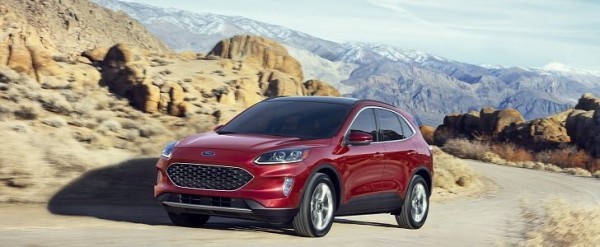
The best analogy we've heard is that the old Escape looked like a hiking shoe, where this one is a running shoe with a big sole. The car-like CUV is also based on the C2 global modular architecture, which has helped it shed as much as 200 lbs.
Ford have made powertrain upgrades as well, though the range still kicks off with the 1.5-liter EcoBoost, making 180-hp and 177 pound-feet (240 Newton-meters) of torque. This 3-cylinder even has a 2-cylinder mode to save fuel. However, if that's not a concern for you, go for the 2-liter turbo with 250-hp and 275 pound-feet of torque (373 Nm). In both cases, an 8-speed gearbox is installed as standard.
The green options start with the Escape Hybrid, equipped with a lithium pack and a 2.5-liter Atkinson cycle hybrid engine, said to have 198-hp. A PHEV version will arrive in early 2020 with a 14.4 kWh battery pack capable of an EPA-estimated range of at least 30 miles in pure electric mode. Based on the European specs, we know that it makes around 220-hp. Rumors talk of an Escape ST, packing AWD and around 280 HP from the 2.3 EcoBoost.
As far as the design is concerned, the Escape is a little too understated for our liking, especially compared to the rugged Jeep or Toyota alternatives. However, the sloped roof and streamlined body are probably going to be popular with people who currently own a Focus or a Fusion.
We like what they did with the interior. The SYNC3 looks modern while the 12-inch system copies the one we saw in the 2020 Explorer. Titanium models will also come with a retractable heads-up display.








